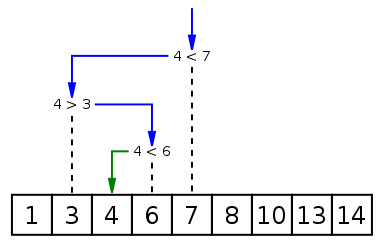This article introduces 11 efficient Python web scraping tools, each with its unique advantages and use cases. Through practical code examples, we hope to help you better understand and apply these tools. Web scraping is an essential method for data collection, and Python has become the go-to language for writing crawlers due to its simple and readable syntax, along with its powerful library support. Today, we'll discuss 11 efficient Python web scraping tools that can help you easily scrape web data.
Requests
requests.getsends a GET request.response.status_codegets the HTTP status code.response.textgets the response content.Introduction: Requests is a very popular HTTP library for sending HTTP requests. It is simple to use and powerful, making it an indispensable tool in web scraping development.
Example:
import requests # Send a GET request response = requests.get('https://www.example.com') print(response.status_code) # Output status code print(response.text) # Output response contentExplanation:
BeautifulSoup
BeautifulSoup(response.text, 'html.parser')creates a BeautifulSoup object.soup.find_all('h1')finds all<h1>tags.title.textextracts the text inside the tag.Introduction: BeautifulSoup is a library for parsing HTML and XML documents, ideal for extracting data from web pages.
Example:
from bs4 import BeautifulSoup import requests # Get web page content response = requests.get('https://www.example.com') soup = BeautifulSoup(response.text, 'html.parser') # Extract all headings titles = soup.find_all('h1') for title in titles: print(title.text)Explanation:
Scrapy
scrapy.Spideris the core class of Scrapy, defining a spider.start_urlscontains the starting URL list.parsemethod processes the response, extracts data, and yields dictionaries.Introduction: Scrapy is a powerful web scraping framework suitable for large-scale data scraping tasks. It provides rich features such as request management, data extraction, and data processing.
Example:
import scrapy class ExampleSpider(scrapy.Spider): name = 'example' start_urls = ['https://www.example.com'] def parse(self, response): for title in response.css('h1::text').getall(): yield {'title': title}Explanation:
Selenium
webdriver.Chrome()launches the Chrome browser.driver.getvisits the specified URL.driver.titleretrieves the page title.driver.quitcloses the browser.Introduction: Selenium is a tool for automating browser operations, particularly useful for handling JavaScript dynamically loaded content.
Example:
from selenium import webdriver # Launch Chrome browser driver = webdriver.Chrome() # Visit website driver.get('https://www.example.com') # Extract title title = driver.title print(title) # Close the browser driver.quit()Explanation:
PyQuery
pq(response.text)creates a PyQuery object.doc('h1').text()extracts the text of all<h1>tags.Introduction: PyQuery is a jQuery-like library for parsing HTML documents. Its syntax is concise and ideal for quickly extracting data.
Example:
from pyquery import PyQuery as pq import requests # Get web page content response = requests.get('https://www.example.com') doc = pq(response.text) # Extract all headings titles = doc('h1').text() print(titles)Explanation:
Lxml
etree.HTML(response.text)creates an ElementTree object.tree.xpath('//h1/text()')uses XPath to extract all<h1>tags' text content.Introduction: Lxml is a high-performance XML and HTML parsing library that supports XPath and CSS selectors, making it ideal for complex parsing tasks.
Example:
from lxml import etree import requests # Get web page content response = requests.get('https://www.example.com') tree = etree.HTML(response.text) # Extract all headings titles = tree.xpath('//h1/text()') for title in titles: print(title)Explanation:
Pandas
pd.read_html(response.text)extracts table data from HTML.[0]selects the first table.Introduction: Pandas is a powerful data analysis library, primarily for data processing, but also useful for simple web data extraction.
Example:
import pandas as pd import requests # Get web page content response = requests.get('https://www.example.com') df = pd.read_html(response.text)[0] # Display DataFrame print(df)Explanation:
Pyppeteer
launch()starts the browser.newPage()opens a new page.gotovisits the specified URL.evaluateruns JavaScript code.closecloses the browser.Introduction: Pyppeteer is a headless browser library based on Chromium, suitable for handling complex web interactions and dynamic content.
Example:
import asyncio from pyppeteer import launch async def main(): browser = await launch() page = await browser.newPage() await page.goto('https://www.example.com') title = await page.evaluate('() => document.title') print(title) await browser.close() asyncio.run(main())Explanation:
aiohttp
ClientSessioncreates a session.session.getsends a GET request.await response.text()gets the response content.Introduction: aiohttp is an asynchronous HTTP client/server framework, ideal for handling high concurrency network requests.
Example:
import aiohttp import asyncio async def fetch(session, url): async with session.get(url) as response: return await response.text() async def main(): async with aiohttp.ClientSession() as session: html = await fetch(session, 'https://www.example.com') print(html) asyncio.run(main())
Explanation:
Faker
Faker()creates a Faker object.fake.name()generates a fake name.fake.address()generates a fake address.Introduction: Faker is a library for generating fake data, useful for simulating user behavior and testing web crawlers.
Example:
from faker import Faker fake = Faker() print(fake.name()) # Generate fake name print(fake.address()) # Generate fake address
Explanation:
ProxyPool
proxiesparameter specifies the proxy IP.requests.getsends the request using the proxy.Introduction: ProxyPool is a proxy pool manager used to manage and switch proxy IPs, preventing blocking by target websites.
Example:
import requests # Get proxy IP proxy = 'http://123.45.67.89:8080' # Send request using proxy response = requests.get('https://www.example.com', proxies={'http': proxy, 'https': proxy}) print(response.status_code)Explanation:
Practical Case: Scraping Latest News from a News Website
Suppose we want to scrape the latest news list from a news website. We can use Requests and BeautifulSoup to achieve this.
Code Example:
import requests
from bs4 import BeautifulSoup
# Target URL
url = 'https://news.example.com/latest'
# Send request
response = requests.get(url)
# Parse HTML
soup = BeautifulSoup(response.text, 'html.parser')
# Extract news titles and links
news_items = soup.find_all('div', class_='news-item')
for item in news_items:
title = item.find('h2').text.strip()
link = item.find('a')['href']
print(f'Title: {title}')
print(f'Link: {link}\n')Explanation:
requests.get(url)sends a GET request to retrieve the web page content.BeautifulSoup(response.text, 'html.parser')parses the HTML.soup.find_all('div', class_='news-item')finds all news items.item.find('h2').text.strip()extracts the news title.item.find('a')['href']extracts the news link.
Conclusion
This article introduced 11 efficient Python web scraping tools, including Requests, BeautifulSoup, Scrapy, Selenium, PyQuery, Lxml, Pandas, Pyppeteer, aiohttp, Faker, and ProxyPool. Each tool has its unique advantages and use cases. Through practical code examples, we hope to help you better understand and apply these tools. Finally, we provided a practical case demonstrating how to scrape the latest news list from a news website using Requests and BeautifulSoup.



